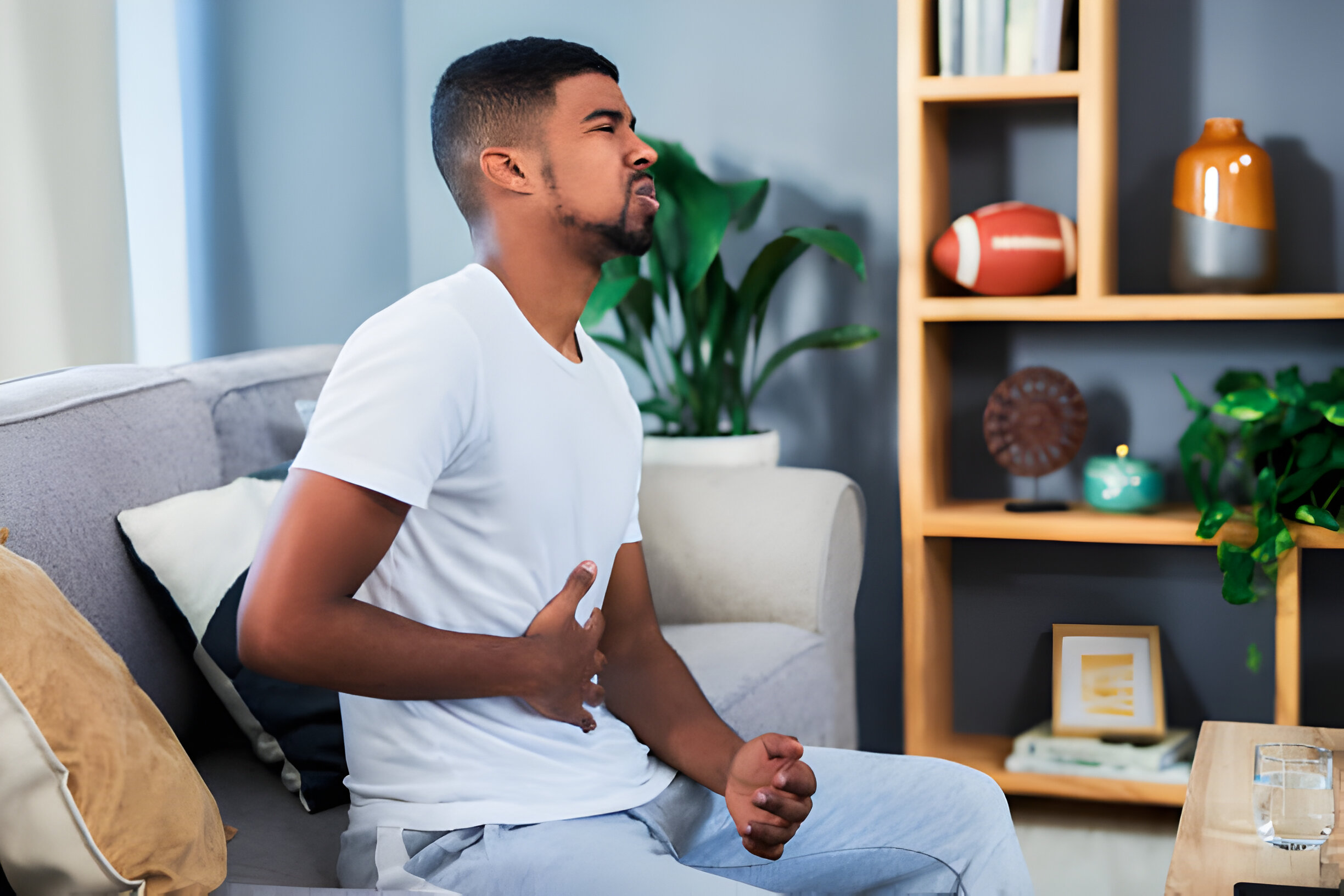Image Credit: GetyImage
Navigating through the complexities of reproductive health can be particularly challenging when symptoms like sperm cramps arise, creating not only physical discomfort but also anxiety and stress for those affected. These cramps, often misunderstood and overlooked, highlight a crucial aspect of male sexual health that warrants attention. Sperm cramps, referring to the sensation of cramping or pain during or after ejaculation, serve as a signpost pointing to potential underlying conditions.
This article delves into the multifaceted nature of sperm cramps, offering insights into their symptoms, causes, and prevention. Initiated by various factors such as inflammation, prostatitis, urinary tract infections, and even stress, understanding these cramps requires a comprehensive look at both physiological and psychological dimensions. The following sections will explore common causes like sexually transmitted infections and testicular pain, the importance of diagnosis, and when consulting a doctor is imperative. Through an informed lens, the discussion aims to empower readers to navigate the complexities of sperm cramps, enhancing both their well-being and their experiences of sexual intimacy.
Understanding Sperm Cramps
Definition and Misconceptions
Sperm cramps, also known as testicular cramps or testicular pain, encompass discomfort or pain in the testicles or surrounding areas. It’s critical to clarify that the discomfort is not directly caused by the movement of sperm. Instead, it often stems from various underlying factors affecting the testicles or the reproductive system. Common misconceptions about sperm cramps include the belief that they are caused by excessive sexual activity or only affect older men. In reality, vigorous sexual activity may lead to temporary discomfort, but it is not a direct cause of sperm pain, which can affect individuals of all ages and is not necessarily indicative of a serious medical condition.
Common Symptoms
Sperm cramps manifest through a variety of symptoms, which can vary based on the underlying cause. Common signs include:
- Testicular Pain or Discomfort: This can range from a dull ache to sharp, intense pain in the testicles or surrounding areas.
- Swelling or Inflammation: The affected area may appear red, swollen, or tender to the touch.
- Pain During Urination or Ejaculation: Some individuals may experience pain or discomfort during these activities.
- Abdominal or Groin Pain: Pain may radiate from the testicles to the lower abdomen or groin region.
- Changes in Testicle Appearance: In some cases, the affected testicle may appear larger or smaller than usual.
Understanding these symptoms is crucial for recognizing and addressing sperm cramps effectively.
Common Causes of Sperm Cramps
Pelvic Muscle Tension
Pelvic muscle stress is a significant contributor to sperm cramps. The muscles in the pelvic floor are crucial during ejaculation, and their tightness or spasms can lead to discomfort or pain in the genital area. Factors such as stress and anxiety symptoms may cause these muscles to contract involuntarily, exacerbating the cramping during and after sexual activities. Managing this condition might involve relaxation techniques or physical therapy aimed at easing the tension in these muscles.
Infections and Inflammations
Infections within the male reproductive system, such as epididymitis, prostatitis, and urinary tract infections, play a central role in the development of sperm cramps. These conditions lead to inflammation and swelling, which in turn cause pain and cramping. Sexually transmitted infections like chlamydia and gonorrhea also contribute to inflammation in the genital area, further leading to discomfort. Treatment typically involves antibiotics and medications that reduce inflammation, providing relief from the painful symptoms.
Varicocele and Spermatoceles
Varicocele, characterized by the dilation of veins within the scrotum, and spermatoceles, which are fluid-filled cysts near the testicles, are structural abnormalities that can cause sperm cramps. These conditions may lead to a feeling of heaviness and discomfort in the testicles, impacting sexual and reproductive health. In severe cases, surgical interventions such as varicocelectomy or sclerotherapy may be necessary to alleviate the symptoms and prevent further complications.
Diagnosis and When to See a Doctor
Medical History and Physical Examination
Diagnosing sperm cramps begins with a comprehensive review of the patient’s medical history and a thorough physical examination. This initial step is crucial to rule out conditions such as testicular torsion or epididymitis. During the physical exam, healthcare providers assess the nature and extent of symptoms, which helps them identify potential contributing factors. This meticulous approach ensures that other possible causes of discomfort, like infections or structural abnormalities, are not overlooked.
Recommended Diagnostic Tests
Depending on the severity of the symptoms, further diagnostic tests may be recommended to provide a clearer picture of the underlying issues. These tests often include:
- Ultrasound, MRI, and CT Scans: These imaging studies are essential for examining the internal structures of the testicles and surrounding areas. They help detect any blockages or structural issues that could be contributing to the discomfort.
- Urinalysis: This test checks for urinary tract infections or other abnormalities that might cause or exacerbate sperm cramps.
- Blood Tests: These are conducted to assess hormone levels, kidney function, and detect signs of inflammation or infection.
Recognizing the signs that necessitate medical attention is crucial for effective management of sperm cramps and preventing potential complications. Individuals should consult a healthcare provider if they experience persistent testicular pain, swelling, changes in testicle appearance, or discomfort during urination or ejaculation. Early diagnosis and appropriate treatment can significantly improve the quality of life and prevent further health issues.
Management and Treatment Options
Lifestyle Changes
To manage sperm cramps effectively, incorporating certain lifestyle adjustments can be highly beneficial. Routine physical activities such as yoga and pilates are recommended to ease muscle tension around the pelvis, potentially reducing symptoms. A balanced diet rich in nutrients, along with adequate hydration, supports overall health and can prevent muscle cramps. Stress management techniques, including meditation and deep breathing exercises, are crucial for preventing involuntary muscle contractions that can lead to cramps. Additionally, wearing supportive underwear and maintaining clear communication with one’s partner can further alleviate discomfort.
Medical and Surgical Treatments
For more persistent or severe cases of sperm cramps, medical intervention may be necessary. Consulting a healthcare professional is essential, as they might prescribe antibiotics if the cramps are due to an infection like prostatitis or a sexually transmitted infection. In cases where medication causes side effects leading to sperm cramps, a doctor may suggest adjusting or changing the medication. For structural issues such as varicocele or conditions requiring immediate action like testicular torsion, surgical options are considered. Procedures like varicocelectomy or surgeries to correct torsion can address the root causes of pain and ensure reproductive health. Pain management may also involve over-the-counter pain relievers like ibuprofen or acetaminophen, and applying warm compresses can provide temporary relief. Regular consultations and following through with prescribed treatments play a pivotal role in managing and potentially resolving sperm cramps.
Conclusion
Through this comprehensive exploration, we have shed light on the nuanced issues surrounding sperm cramps, spanning from their symptoms and causes to viable prevention and treatment options. By understanding that these discomforts are not merely physical anomalies but signs pointing to various underlying conditions, individuals can approach their reproductive health with an informed perspective. The emphasis on recognizing symptoms early and seeking medical advice underscores the importance of proactive health management, which is indispensable for mitigating risks associated with sperm cramps and enhancing overall well-being.
The discourse around sperm cramps, enriched by insights into lifestyle adjustments and medical interventions, invites individuals to engage actively in maintaining their sexual and reproductive health. Highlighting the significance of such health concerns not only aids in demystifying the conditions but also in fostering a culture of openness and awareness. As readers navigate through their personal journeys, it is hoped that the knowledge imparted here empowers them to take constructive steps towards addressing and preventing sperm cramps, thereby contributing to healthier and more fulfilling sexual lives.
Also Read: The Small of the Back: Definition, Function, and Care
FAQs
1. What are some effective ways to prevent sperm cramps?
To prevent sperm cramps, consider wearing supportive underwear, managing stress levels, maintaining clear communication with your partner, and staying hydrated by drinking enough water. Additionally, avoid excessive ejaculation, address emotional concerns, and refrain from consuming alcoholic beverages and tobacco.
2. How long do sperm cramps typically last?
The duration of sperm cramps or pain associated with ejaculation can vary. Generally, such pain is short-lived, lasting from a few minutes to a few hours. However, if the pain persists or frequently recurs, it’s crucial to consult a doctor to identify any potential underlying issues.
3. What medications are recommended for relieving sperm cramps?
For managing sperm cramps, over-the-counter medications such as non-steroidal anti-inflammatory drugs (NSAIDs) may be used. The choice of specific pain relief methods should be tailored to the individual’s needs, considering factors like the severity of the pain and any existing health conditions.
4. Can a man release sperm without realizing it?
Yes, men can release a small amount of sperm, known as pre-ejaculate or “pre-cum,” without being aware of it. This fluid can emerge from the penis before ejaculation. It’s important to note that even if a man withdraws before ejaculating, there is still a possibility of pregnancy due to the presence of sperm in the pre-ejaculate.




